A Unique Find
In early April I stumbled upon an antique tray of type (numerals only) for letterpress printing. It was large and unique, two qualities that usually make for a good addition to my type cabinet. I just had to have it: bold, sans serif type, in the inline style.
I snatched it up and tucked it away, knowing that my other design & printing work and commitments would slow down at the beginning of the summer making room for me to attend to this new-to-me font.
When I had time to inspect it, I was very surprised to discover a couple things:
First, they were in regimented, multiple widths: thin, regular, and extended - with each size being designed at the exact same width across the the numbers.
Second, I was surprised that the type was unfinished! I even did a quick scratch test on a non-printing surface to confirm it. This was very unusual. As far as I know all antique wood type manufacturers would have sealed and sanded the wood planks before the designs would have been carved.
So, why was this type unsealed? Was it a test of some sort? There were annotations on a couple of the faces of the numbers, which was also unusual. And who made it? What was the name of the font? And why was it in multiple widths?
Unfortunately, further investigation would have to wait. So, the type was tucked away for later, even if they were often at the forefront of my mind!
A Little Help from my Friends
Finally, June arrived and my studio schedule lightened. It was time to focus on that mysterious tray of type.
The primary task at hand was to finish the type so it would print well.
The wood needed sealed with shellac and sanded with fine-grained paper multiple times in order to create a nice, printable surface. Wood that is unfinished will soak up ink, and most likely unevenly. This wastes somewhat expensive ink and also would create inconsistencies in the printing surface. I like texture and the accidental nature of printing with antique wood type, but even I have a limit!
I ended up applying three passes of shellac followed by three rounds of sanding — not a quick process when drying times are included.
In the meantime, I also reached out to other designers and printers on the internet for help identifying the font. A post on Instagram revealed in 45 minutes the name of the font (Basuto!) thanks to a designer from Brazil. Then, another designer from the UK also was able to identify it and sent me a picture from a 1954 type specimen from Stephenson, Blake, & Co. that confirmed the manufacturer and typeface name. Another inquiry on Facebook found a surprise connection to a gentleman that was able to accurately date the maker’s mark on the side of the type, or at least it’s earliest possible manufacturing date (1940).
It’s simply amazing how much knowledge others are willing to share on the internet! There is absolutely no way I would have been able to identify this design so quickly or with such high quality references if I had attempted this entirely on my own.
The Missing Pieces
This was the most extensive work I have put into identifying a font. Oftentimes the design is so common that it is easy to put a name to (Concave Tuscan). Or, I simply will describe it accurately without the manufacturer’s given name (4” French Clarendon Condensed, for example.)
*It is worth noting here that many type designs were “borrowed” between manufacturers and so the same (or highly similar) design may show up in multiple places but with different names. Additionally, some fonts have different names in different markets. Futura for instance was initially used in Europe for Paul Renner’s famous design, with the name Spartan briefly being used in the US market for the exact same design. Finally, some early font names are nearly useless in conversation and are more of a catalog reference number.
But this new acquisition required an accurate identification. Why?
Because it was missing two characters: Regular 3 and Extended 5. And I really wanted that extended 5!
Originally, it was my plan to analyze the other blocks to extract proportions and extrapolate what the missing designs might have been using some simple type design principles.
However, with an accurate font identification, now I can recreate the correct designs for the missing numerals! I have begun the work on the extended 5, carefully redrawing the design from the provided catalog specimen in order to use a laser engraver to construct a new, printable 5 that matches the rest of the drawer of type and is historically accurate.
The Proof is in the Print
Finally, the time had come for the first proof!
A proof is literally “proof” that the type will print (and hopefully print well!)
I picked the number 8 for it’s bold form and symmetry, and simply locked it into the proof press with magnets and a makeshift tension bar across the press bed. I chose a favorite red ink and squeezed out just a bit before rolling it to a thin, consistent layer to ink the block.
The first pull was a little weak and speckled — a pressure issue and easy to fix with more pressure or a bit more ink. I chose the latter and was able to get a nice, clean proof with just the perfect amount of surface character (small knicks and scratches). It was so exciting to see this type perform after decades of it waiting patiently for a designer and printer who cared enough to bring it to life.
And what a relief that my process and work had yielded beautifully printing blocks!
Help me Celebrate Design History
To celebrate this typeface, a lovely, small slice of design history, I will be hand printing “made to order” type specimens of the individual extended numbers. Each print will be a “perfectly imperfect” piece of letterpress love for you to enjoy in your own space.
It has been a joy to work with this type and I am thrilled with the proofs I have pulled. It is so amazing to see this type come to life!
And I would love to do more work like this, which celebrates design history and typography simply for the sake of it. But the time, effort, and investment it takes needs to bring in a return to help “pay” for it.
And so, that’s where you come in…
If you enjoyed this article and you appreciate fonts, design, or typography, or maybe have a respect for analog processes, here are two ways you can support my small, rural studio practice:
Share this article. Share it here on Substack, Facebook, Threads, X, etc.
Pre-Order a hand-printed, 6x8” type specimen from this font.
Follow the link below to my Etsy shop
From the drop down menu, choose your number, and then the color/style that you want your specimen printed in. (There are 6 color/style options, at three different price points.)
Add to cart and checkout! Your unframed print will likely ship in 4-5 weeks.
LINK TO PURCHASE:
https://hoosiertypeco.etsy.com/listing/4326585731
I will close Pre-Orders on July 3 and only what has been pre-ordered will be printed. I have no plans to print these in the same way again (this size, colors, arrangment, etc.)
Thank you for reading along and for all your support!
Growing a new-to-me letterpress design practice in rural Indiana is a real challenge, but it is worth it when I see so many of you enjoying my prints and engaging with my posts on fonts, design history, and creativity!
-Daniel
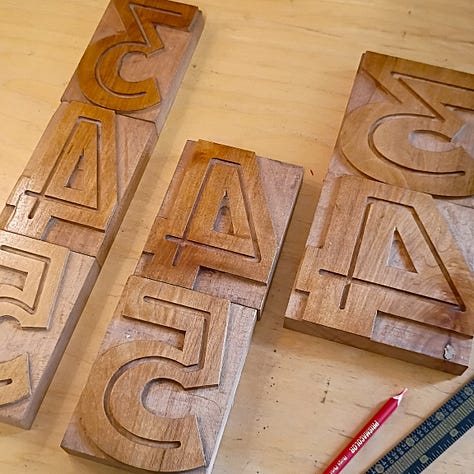

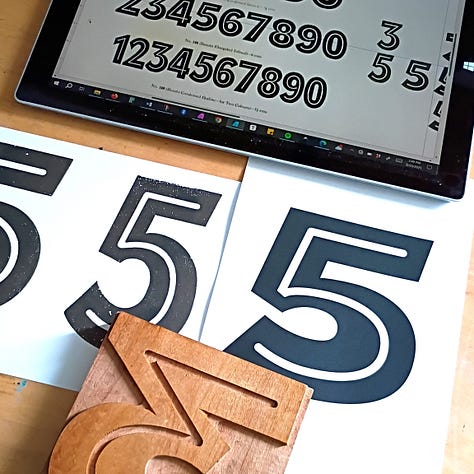
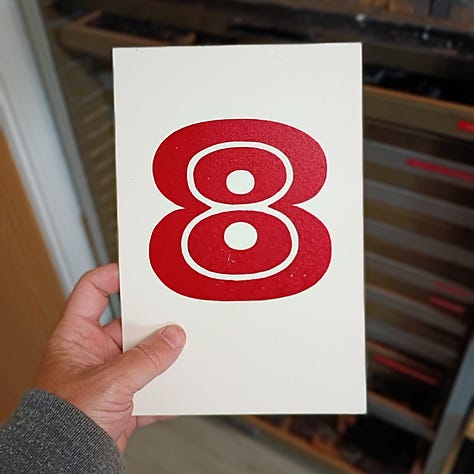
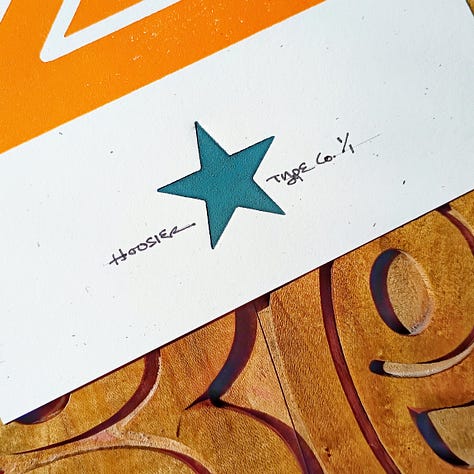
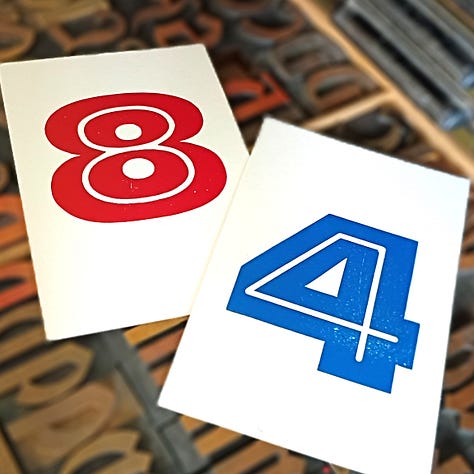
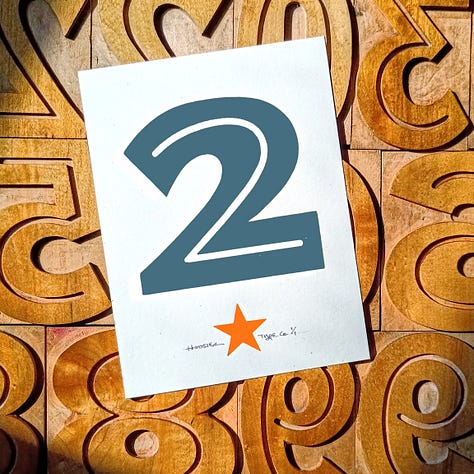
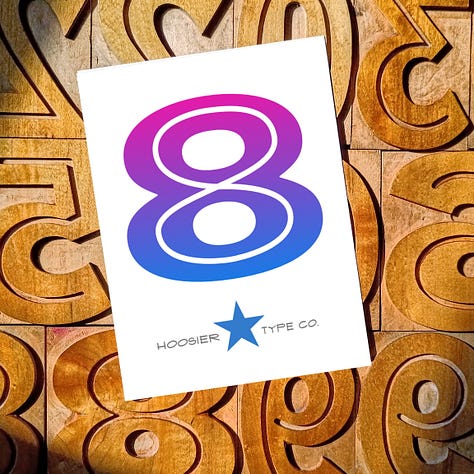


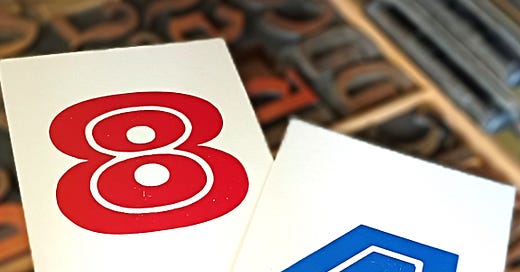


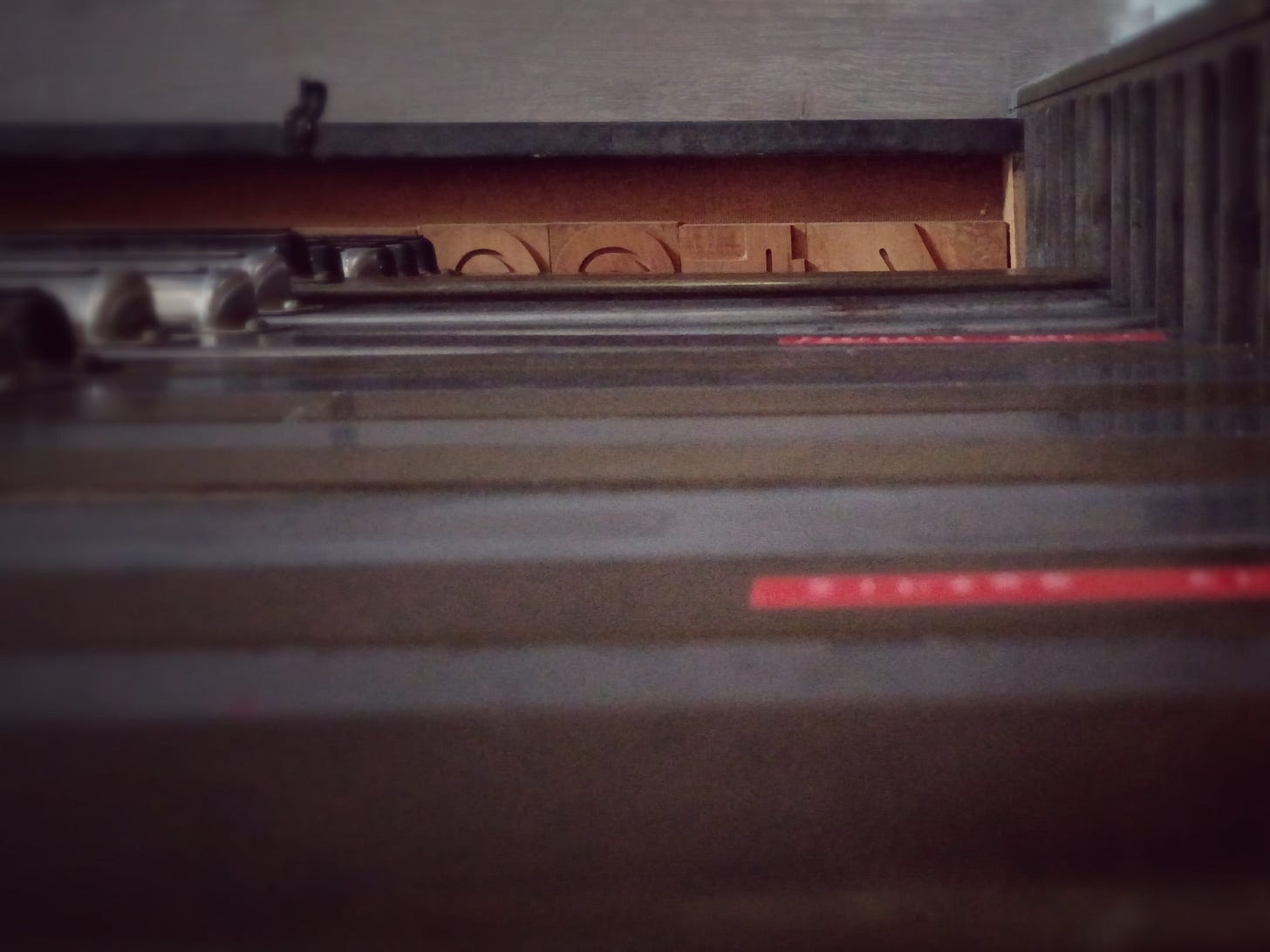
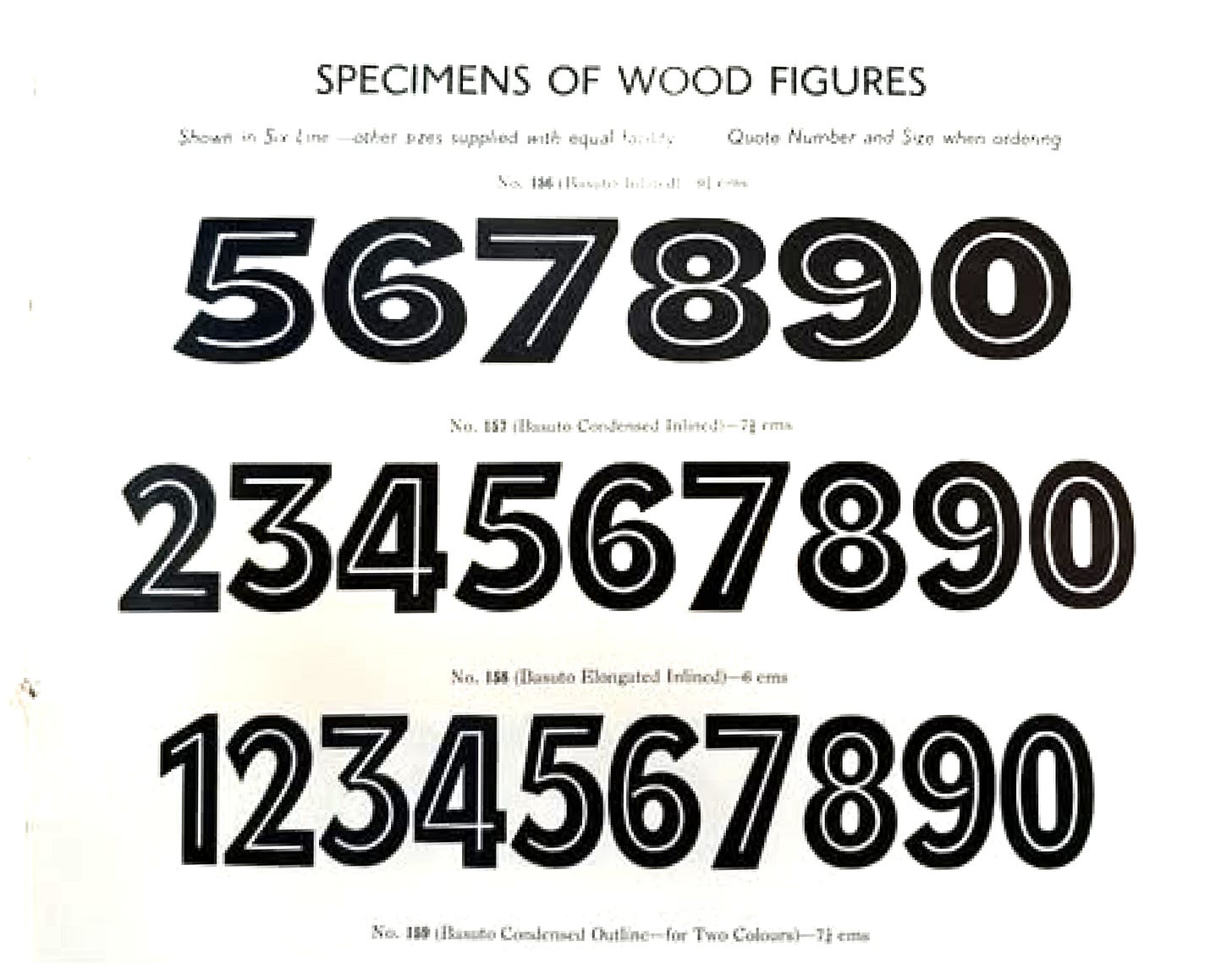
I placed an order for that beautiful reconstructed 5 yesterday. It will take pride of place next to a print of Figure 5 in Gold by Charles Demuth. Thank you!
Thanks for sharing this adventure! I love all things type and letterpress!!